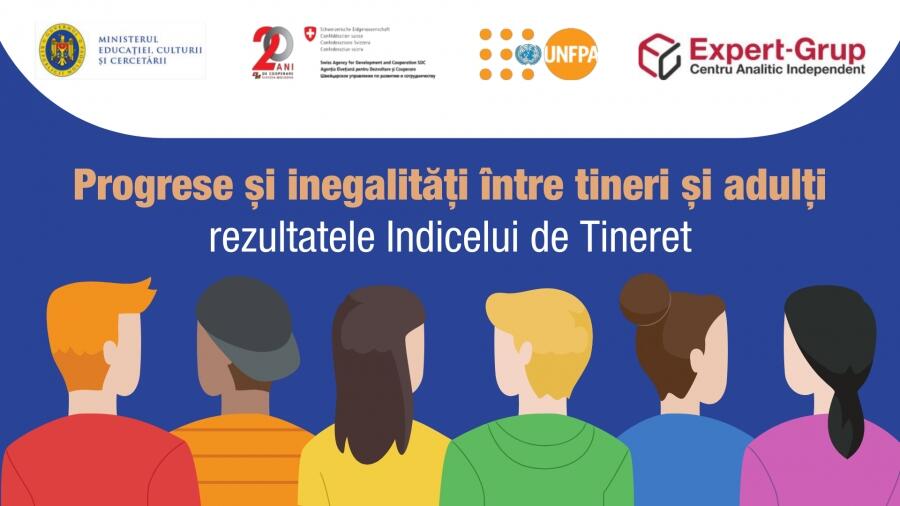The economic gap between young people and adults has narrowed in the last four years, especially in the field of labor market participation, by equalizing the rates of long-term unemployment (unemployment rate exceeding 12 months) among young people and adults, by 2019. At the same time, in the last local elections in the Republic of Moldova held in 2019, the turnout of young people was 32% lower, compared to the local elections in 2015, while the number of adult voters increased by 23%. At the same time, the crime rate and the incidence of sexually transmitted diseases and tuberculosis are higher among young people than among the adult population of our country.
These are some of the conclusions of the Youth Index - a statistical benchmark for monitoring public policies in the field of youth, developed according to the Expert-Grup methodology, with the support of the United Nations Population Fund (UNFPA). The data of the Youth Index were discussed in the framework of the round table "Dynamics of the youth sector in the Republic of Moldova, through the Youth Index".
Natalia PLUGARU, Assistant Representative of the United Nations Population Fund (UNFPA) to the Republic of Moldova: “The results presented by the Youth Index reconfirm the fact that investing in the youth sector, in young people, is essential. That is why the programs we support within the UN Population Fund, but also other partners, come to the aid of the Government of the Republic of Moldova in order to increase civic spirit among young people, to increase their participation in the decision-making process, and to contribute to maintaining a state of health and well-being among young people, reducing inequalities also remains a priority for the 2030 agenda to which the Government of the Republic of Moldova has also signed”.
Iurie MORCOTÎLO, a senior economist within Expert-Grup, author of the Youth Index: “The Youth Index is a statistical tool, it only shows us the developments in the field of youth in the Republic of Moldova, but it does not highlight the causes. It remains up to the policymakers, people involved in the analysis of the sector to analyze and take into account the developments in the labor market, in the field of health and to highlight what are the causal factors and what should be the policy interventions in order to reduce the gaps between young people and adults in a certain field. The figures that we have highlighted show that, except for the economic field, there are significant gaps between young people and adults and a drastic evolution has not taken place in recent years, only small exceptions could be noticed”.
The representatives of the Ministry of Education, Culture and Research of the Republic of Moldova stated that the data of the Youth Index might be important for the elaboration of the new development strategy of the youth sector in the Republic of Moldova.
Marcel MARIN, Head of the Department of Youth, Ministry of Education, Culture and Research of the Republic of Moldova: “We, the Ministry of Education, Culture and Research will soon be involved in the process of developing a new strategy, which must be based on tangible data and figures. We need fresh data, relevant data so that we can develop something that meets the needs”.
WHAT IS THE YOUTH INDEX?
The Youth Index is a statistical benchmark for monitoring public policies in the youth field. It quantifies the level of inequality between young people and adults and can take values between 0 (perfect equality) and 1 (maximum inequality). The study measures inequalities between young people and adults in four main areas: decision-making process, risk situations, health, and economic activity. During 2015-2018, the value of the Youth Index decreased from 0.60 to 0.54.
The Youth Index was developed by the Independent Think-Tank "Expert-Grup" within the Joint Fund for the development of Youth Centers and strengthening the participation and civic involvement of young people in the Republic of Moldova of the Ministry of Education, Culture and Research, the Swiss Agency for Development and Cooperation and the United Nations Population Fund.





